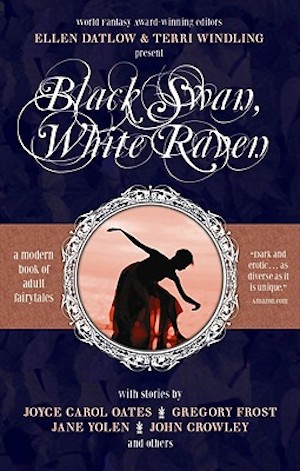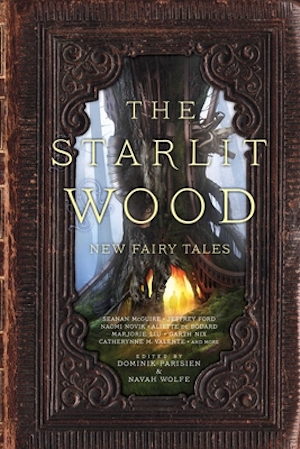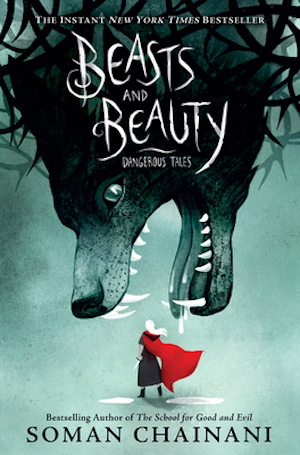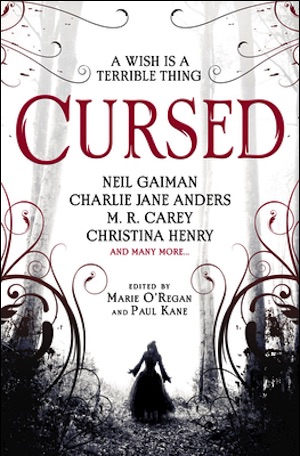“Hansel and Gretel” is a harrowing tale of kinship, hunger, magic ducks, and of course, the most important part: truly spectacular baking skills. Yes, that’s right, the real hero of this story is a monumental achievement in the history of gingerbread houses, a life-sized treat that you could step right into and eat. Yet, often this aspect is overlooked in our storytelling—wait, let me back up.
“Hansel and Gretel,” if you’re not familiar, is a classic tale made famous by the Brothers Grimm about siblings whose family falls on hard times. Scarcely able to support themselves, let alone their children, the mother (or step-mother, depending on who you ask) convinces her husband to take the children into the woods and abandon them, so that the parents at least can survive on the meager amount of food they are able to scrounge up. Their father reluctantly agrees to this plan, but Hansel overhears and sneaks out to collect white stones from around the cottage. (They have nice landscaping, okay?) When their father leads them deep into the woods, Hansel drops the stones from his pocket. Their father leaves them by a fire and tells them he’ll be back, but of course heads straight for home and a bigger dinner. Hansel and Gretel follow the stones back to the house.
Well, their (step-)mom is pretty annoyed by this, and convinces their father to repeat the whole thing the next day. And this time she cleverly locks the door beforehand, so when Hansel gets up to repeat his trick with the stones, he isn’t able to gather any. He snags a breakfast roll on the way out the door and uses breadcrumbs to create a new trail, but of course the local bird population finds this strategy intensely interesting; when their father leaves them again, Hansel and Gretel find they have no way home.
They feel pretty crumby (wink wink) about this, but in spite of their recent bird-related troubles, they decide to follow a pretty white bird, which leads them through the woods to the most delicious house ever created. It’s made of gingerbread, or at least some kind of bread, depending on who you ask—either way, Hansel and Gretel, overcome with hunger, start chowing down. The owner of the house naturally does not take kindly to this (because they didn’t say “Trick or treat!” presumably), and soon enough the siblings are in another bind, because the owner happens to be a witch who eats children. (More like Trick-or-TRAP!)
The witch cages Hansel and puts Gretel to work cooking food for him constantly, but luckily for Hansel the witch doesn’t see well, so when she comes around to check to see if he’s plump enough to devour, he puts a stick through the bars of his cage and leaves her wondering how he can be so bone-thin. This stalls things for a bit but eventually the witch loses patience and orders Gretel to fire up the oven. Gretel craftily tricks the witch into checking the temperature of the oven and shoves her inside, saving herself and Hansel. They loot the place and find a bunch of pearls and gold, and then head out to see if their directional skills have improved. Not really, but they encounter a magical duck who agrees to ferry them across a river (yes, really!), and soon they recognize their surroundings and find their way home. Their father is overjoyed to see them, and it turns out their (step-)mother is dead, so with their newfound wealth they all live happily ever after.
While I have yet to find a modern version that properly celebrates the true hero of this story—an entire house made of candy and baked goods—modern writers have cooked up compelling variants exploring different facets of the original tale: the siblings’ relationship, the witch’s motives, the town’s reactions, how hunger and poverty can affect a family or a society, and so on.
Here are the five most irresistible versions I have found:
“The Trial of Hansel and Gretel” by Garry Kilworth (from Black Swan, White Raven, edited by Ellen Datlow and Terri Windling)

The events of the original tale are told (and embellished) mostly by Gretel, and a little bit by Hansel, and a little bit by the stepmother in this funny and devious reimagining. Taking place entirely after the incident of the candy house and the witch burning, Hansel and Gretel are locked to a wagon and brought before the town judge. The judge may have already mentally condemned them to death, but finds himself drawn in by their bizarre tale. As Gretel stumbles over his questioning, it appears that whatever happened to the witch, it wasn’t straightforward and she isn’t sharing the whole truth. When the children’s father and stepmother show up with further evidence, it throws everything into chaos. The story successfully grapples with wealth, scarcity, and hunger, but still manages to strike a tone that’s more cheeky than dark.
“Even the Crumbs Were Delicious” by Daryl Gregory (from The Starlit Wood, edited by Dominik Parisien and Navah Wolfe)

This near-future retelling features a recreational drug designer named Rolfe, or rather, Rolfe’s incorrigible roommate Tindal, who enjoys Rolfe’s work a little too much. When Rolfe goes missing, Tindal gets into Rolfe’s drug printer and prints every recipe on edible paper which he then uses to wallpaper Rolfe’s house. And then promptly falls asleep and forgets what he’s done. When a couple of kids wander through the door he may or may not remember closing, they start tasting the fresh wallpaper and mix themselves into quite a mental state: the girl thinks she is being forced to clean and cook for Tindal, and the boy thinks he’s been shrunk down to nothing and caged in a cardboard box. Tindal finds himself trying to find their parents while attempting to convince them he isn’t a witch who’s planning to eat them. Tindal and the story both lean into the bizarre humor of the situation, but we may suspect that finding the kids’ parents won’t be the easy answer Tindal hopes for.
“Hansel and Gretel” by Soman Chainani (from Beasts and Beauty: Dangerous Tale)

In this story we focus on Rishi and Laxmi, whose mother is a wondrous baker. So wondrous that eventually the villagers accuse her of witchcraft, blind her, and banish her into the forest. And then Rishi and Laxmi get a new stepmother, and the familiar story begins, although this version is both darker and more satisfying than more traditional versions, as we get to know the characters a bit better, and justice is certainly served (and not by the village council). With room for sweetness and forgiveness taking the edge off the darkness in this telling, it’s safe to share with younger eaters.
“Haza and Ghani” by Lilith Saintcrow (from Cursed, edited by Marie O’Regan and Paul Kane)

This dark iteration of the story borrows more of the trappings and symbolism of the Grimms’ version than the original plot, though the general shape of it is recognizable. Ghani leaves home after her brother is taken as tribute by priests of the Flayed God and made an acolyte in their order. She finds her way to the monastic kitchen and an apprenticeship, of a kind, with the kitchen queen Kali, who teaches her much about cooking and also about Flower Style, a subtler art than what the boys learn in the temple. Perhaps they might have lived peacefully on in this way, but famine stretches across the land; when the old Abbot eyes Haza for a restorative ritual, only Ghani is paying enough attention to realize what is happening. Not exactly a happy ending, but the ingredients certainly come together nicely.
“Lost and Abandoned” by John Crowley (from Black Swan, White Raven, edited by Ellen Datlow and Terri Windling)
Crowley’s version of “Hansel and Gretel” is almost more of a meditation on childhood abandonment, interwoven with thoughts on storytelling and the place where stories fail reality. With no definite resolution, Crowley leaves the reader hanging, wondering what will become of these children (both the narrator’s own children, when he loses his job at an enrichment center for troubled teens, and the teens at the center as well). Even as his own life takes on the flavors of Hansel and Gretel, he asks the teens to retell the story in their own way, as a writing exercise. Crowley invites us to ponder the similarities and differences in the stories, and offers a chance to stop and reflect: we can do better for our lost and abandoned children, if only we will remember that their stories have not ended already.
Which modern versions of this classic tale are most to your taste? Please recommend your favorites in the comments!
Rachel Ayers lives in Alaska, where she writes cabaret shows, daydreams, and looks at mountains a lot. She has a degree in Library and Information Science which comes in handy at odd hours, and she shares speculative poetry and flash fiction (and cat pictures) at patreon.com/richlayers.










